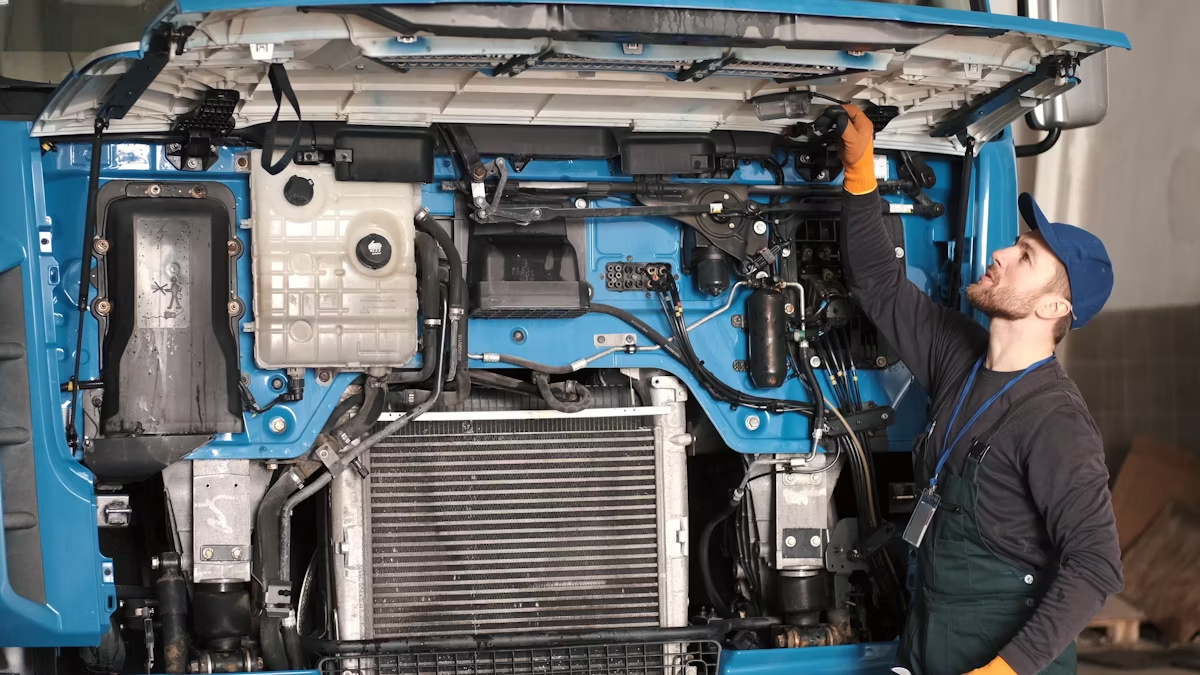
Mechanical seals play a crucial role in various industrial applications. They prevent fluid and gas leakage in rotating equipment like pumps and compressors, ensuring operational efficiency and safety. The global market for mechanical seals is projected to reach approximately USD 4.38 billion by 2024, with a growth rate of around 6.16% annually from 2024 to 2030. This growth highlights their increasing importance across industries. A wide variety of mechanical seals exist, each designed to meet specific operational needs and conditions, making them indispensable in maintaining environmental compliance and enhancing industrial productivity.
Basic Components of Mechanical Seals
Mechanical seals consist of several essential components that work together to prevent leakage in industrial equipment. Understanding these components helps in selecting the right seal for specific applications.
Primary Sealing Elements
Primary sealing elements form the core of mechanical seals. They are responsible for creating the main barrier against fluid leakage.
Rotating Seals
Rotating seals are attached to the rotating part of the equipment, such as a pump shaft. They move with the shaft, maintaining a tight seal against the stationary component. This movement is crucial for preventing leaks while allowing the shaft to rotate freely.
Stationary Seals
Stationary seals remain fixed in place, usually attached to the housing of the equipment. They work in conjunction with rotating seals to form a complete sealing system. The stationary seal provides a stable surface against which the rotating seal can press, ensuring a reliable seal.
Secondary Sealing Elements
Secondary sealing elements enhance the effectiveness of mechanical seals by providing additional sealing capabilities. They help compensate for minor misalignments and variations in operating conditions.
O-rings
O-rings are circular elastomeric elements that provide a static seal between two surfaces. They are commonly used in mechanical seals to prevent external contaminants from entering the sealing area. O-rings are versatile and can adapt to various shapes and sizes, making them suitable for different applications.
Gaskets
Gaskets serve as another type of secondary sealing element. They are typically made from materials like rubber or PTFE and are used to fill the space between two surfaces. Gaskets help prevent leaks by creating a tight seal, especially in dynamic conditions where movement might occur.
Other Components
In addition to primary and secondary sealing elements, mechanical seals include other components that contribute to their functionality.
Springs
Springs play a vital role in maintaining the pressure between the rotating and stationary seals. They ensure that the seals remain in contact, even when there are fluctuations in pressure or temperature. Springs help accommodate any axial movement, enhancing the seal’s reliability.
Metal Parts
Metal parts provide structural support to mechanical seals. They include components like metal housings and retainers that hold the seals in place. These parts are designed to withstand the harsh conditions often encountered in industrial environments, ensuring the longevity and durability of the seal.
Understanding the basic components of mechanical seals is crucial for selecting the right type for specific industrial applications. Each component plays a significant role in ensuring the seal’s effectiveness and reliability, ultimately contributing to the overall efficiency of the equipment.
Types of Mechanical Seals
Mechanical seals come in various types, each designed to meet specific operational requirements. Understanding these types helps in selecting the most suitable seal for different industrial applications.
Cartridge Seals
Cartridge seals offer a pre-assembled solution, simplifying installation and reducing the risk of errors. They enhance reliability
Applications and Selection Criteria
Industrial Applications
Mechanical seals find extensive use in various industrial sectors due to their ability to prevent leaks and maintain system integrity. Two prominent industries that rely heavily on mechanical seals include chemical processing and oil and gas.
Chemical Processing
In the chemical processing industry, mechanical seals play a vital role in ensuring the safe containment of hazardous fluids. They prevent leaks in pumps and mixers, which is crucial for maintaining safety and environmental compliance. The seals help in preserving the integrity of the process equipment by preventing contamination and ensuring that the chemicals remain within the designated systems. This application highlights the importance of selecting seals that can withstand aggressive chemicals and varying temperatures.
Oil and Gas
The oil and gas industry demands robust and reliable sealing solutions due to the high-pressure environments encountered in drilling and extraction processes. Mechanical seals are essential in preventing leaks that could lead to catastrophic failures or environmental hazards. The increasing demand for long-lasting and efficient mechanical seals in this sector underscores their critical role in maintaining operational safety and efficiency. Seals used in oil and gas applications must endure extreme pressures and temperatures, making the selection of appropriate materials and designs crucial.
Selection Criteria
Choosing the right mechanical seal involves considering several factors to ensure optimal performance and longevity. Key criteria include temperature and pressure conditions, as well as fluid compatibility.
Temperature and Pressure Conditions
Mechanical seals must withstand the specific temperature and pressure conditions of the application. High-temperature environments require seals made from materials that can resist thermal degradation. Similarly, seals used in high-pressure systems must be designed to handle the axial loads without compromising their inte
Post time: Oct-31-2024




